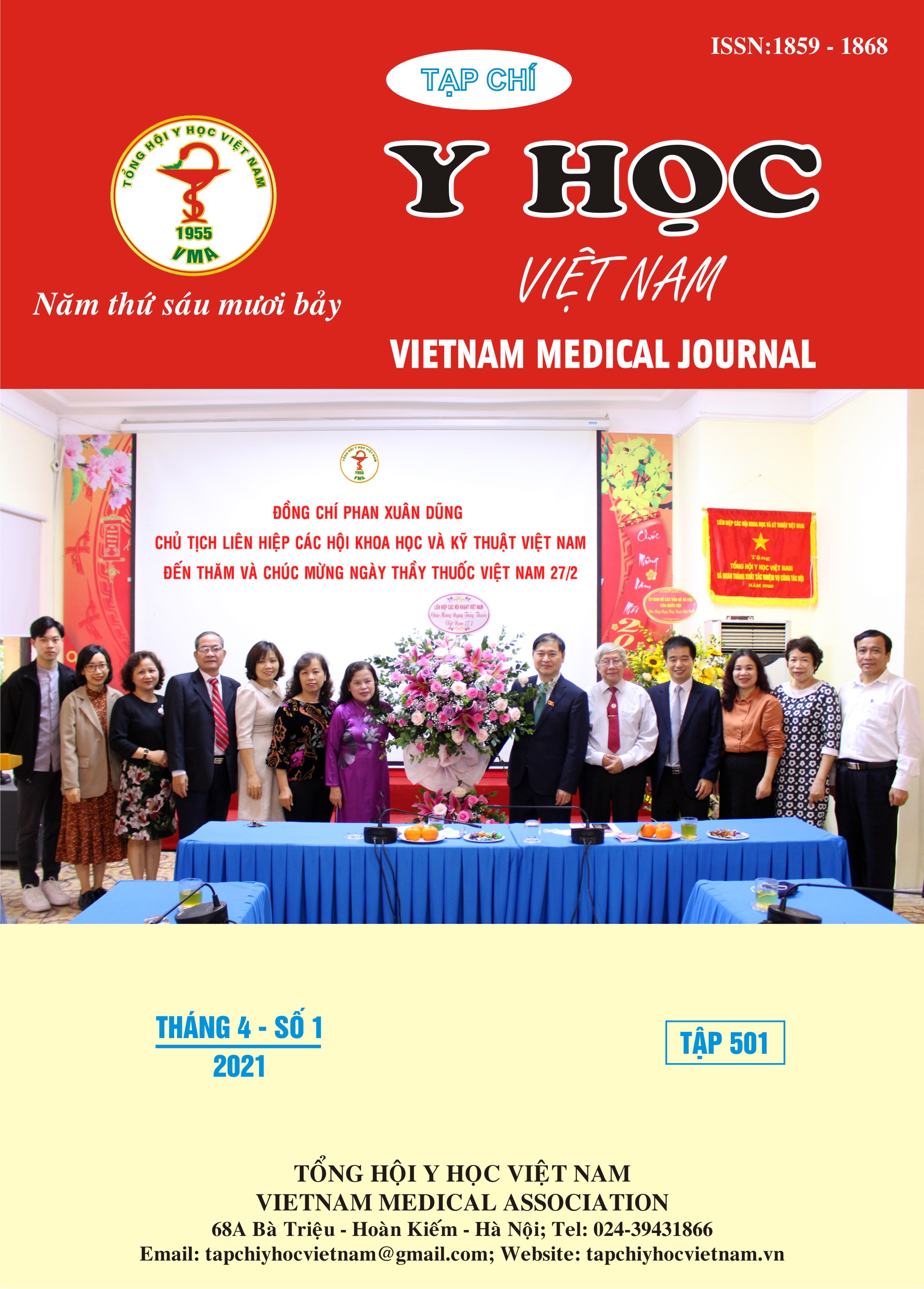STUDY ON THE REALITY AND SOME RELATED FACTORS OF SEVERE PNEUMONIA IN CHILDREN AGED 2 - 60 MONTHS OLD IN QUANG NGAI HOSPITAL FOR WOMEN AND CHILDREN
Main Article Content
Abstract
Introduction: Pneumonia is one of the most common diseases in children, especially under 5 years old. According to the recent statistics of WHO and UNICEF, it is more than 2 million children died by pneumonia every year. In Vietnam, pneumonia is the leading source of hospitalization in Pediatric hospitals as well as mortality in children. There are 4000 children died by pneumonia each year, accounting for 12% of mortalities among children under 5 years of age. In Quang Ngai Hospital for Women and Children, the children were admitted to the hospital for pneumonia quite large, the mortality and inter-hospital patient transfer was still high from 2017 to 2020. We want to evaluate the situation of severe pneumonia in Quang Ngai in order to apply appropriate preventions in child patients with high-risk factors. Objective: To describe clinical, subclinical characteristics and some severe pneumonia-related factors in children aged 2- 6 months in Quang Ngai Hospital for Women and Children. Subject and method: A descriptive cross-sectional study on 220 patients hospitalized in Pediatric Intensive Care Unit- Toxic Managenment Department and Pediatric Respiratory Department of Quang Ngai Hospital for Women and Children between October 2019 and August 2020. Result: Of 220 children, 33.6% was classified as severe pneumonia. General danger signs were actual rare, tachypnea was the most common symptom (100%). The number of increased peripheral blood leukocytes accounted for 58.1% (43/74). Increased serum CRP concentration was 70.3% (52/74). Alveolar infiltration injury reached its peak of 70.3% (52/74). Relevant factors of severe pneumonia included: history of exposure to acute respiratory infections (p < 0.05); the level of malnutrition (p < 0.05); onset time ≥ 3 days (p < 0.001). Conclusion: Severe pneumonia accounts for a high proportion. General danger signs are actual rare, tachypnea is the most common sign, the number of peripheral blood leukocytes and serum CRP concentration increase. Alveolar infiltration injury is common lesion on chest X-ray. Severe pneumonia- related factors are: history of exposure to acute respiratory infections, malnutrition, and onset time ≥ 3 days.
Article Details
Keywords
pneumonia, severe pneumonia, clinical, subclinical, related factors of severe pneumonia
References
2. Lưu Thị Thùy Dương, Khổng Thị Ngọc Mai (2019), “Đặc điểm lâm sàng, cận lâm sàng và các yếu tố liên quan đến mức độ nặng của viêm phổi ở trẻ em từ 2 - 36 tháng tại Bệnh viện Trung Ương Thái Nguyên”, Tạp chí khoa học và công nghệ, 207(14), tr. 67 - 72.
3. Võ Thị Kim Dung (2018), Nghiên cứu đặc điểm lâm sàng, cận lâm sàng và thể tích tiểu cầu trung bình (MPV) trong viêm phổi trẻ em từ 2 tháng đến 5 tuổi, Luận văn Thạc sĩ Y học, Trường Đại học Y Dược Huế.
4. Hoang V.T., Dao T.L. Minodier P. et al (2019), “Risk Factors for Severe Pneumonia According to WHO 2005 Criteria Definition Among Children < 5 Years of Age in Thai Binh, Vietnam: A Case - Control Study”, Journal of Epidemiology and Global Health, 9(4), pp. 274 - 280.
5. Nguyễn Thành Nhôm, Phan Văn Năm, Võ Thị Thu Hương (2015), “Nghiên cứu đặc điểm lâm sàng, cận lâm sàng và các yếu tố liên quan đến viêm phổi nặng ở trẻ em từ 2 tháng đến 5 tuổi tại bệnh viện đa khoa tỉnh Vĩnh Long”, Kỷ yếu các đề tài nghiên cứu khoa học Bệnh viện đa khoa Vĩnh Long,10, tr. 1 - 10.
6. Nguyễn Hải Thịnh (2015), "Nghiên cứu áp dụng thang điểm viêm phổi do vi khuẩn (BPS) trong viêm phổi trẻ em từ 2 tháng đến 5 tuổi", Luận văn tốt nghiệp Thạc sĩ Y học, Trường Đại học Y Dược Huế.
7. Wei S., Shi T., Chen K. et al (2018), “Risk Factors for Severe Community - Acquired Pneumonia Among Children Hospitalized with CAP Younger Than 5 Years of Age”, Pediatr Infect Dis J, 176, pp. 1 - 25.
8. World Health Organization (2013), “Cough and difficult breathing”, Pocket Book of Hospital Care for Children - Guidelines For The Management of Common Childhood Illness 2nd Edition, pp. 76 - 124.


